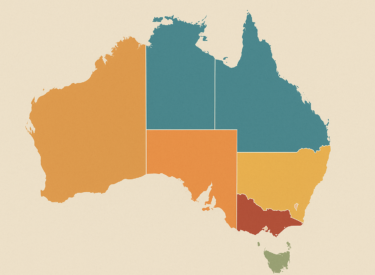How long are you planning to live?
Now, that's a morbid question, isn't it?
In an unexpected shift, the Australian Bureau of Statistics (ABS) has reported that life expectancy has decreased for the second consecutive year.
This downward trend marks a pivotal moment in our understanding of longevity in Australia, which has been on an upward trajectory for decades.
But what does this mean for Australians, and how will it impact our broader society, from retirement planning to the real estate market?
The data behind the decline
According to the ABS, average life expectancy has dropped slightly over the past two years, with various factors contributing to this decline.

While Australia continues to have one of the highest life expectancies globally—around 81.3 years for men and 85.3 for women—the recent dip reveals a shifting landscape.
The likely culprits are the COVID-19 pandemic, its lingering health effects, and an increase in mortality rates from respiratory illnesses.
These trends are consistent with patterns seen internationally, suggesting a global recalibration of longevity due to unprecedented public health challenges.
Although the drop might appear marginal, its implications are far-reaching.
Other highlights of the ABS findings include:
Life expectancy at birth:
- was highest for males (81.7 years) in the Australian Capital Territory and for females (85.7 years) in both the Australian Capital Territory and Western Australia
- was lowest for both males (76.4 years) and females (80.4 years) in the Northern Territory, 4.7 years lower than for Australian males and females
- decreased across all states and territories for females
- decreased across most states and territories for males, except the Northern Territory which recorded a 0.2 year increase.


Why this matters for Australians
A decrease in life expectancy, even a small one, has ripple effects on various aspects of our lives.
Here are a few areas where we can expect to see shifts:
1. Retirement planning and superannuation
For decades, Australians have been preparing for longer retirements, and policies have shifted to accommodate our aging population.
With a slightly shorter life expectancy, the assumptions underlying retirement planning could shift.
Will Australians feel comfortable with the same retirement ages and financial planning expectations?
A subtle shift here could see recalculations on superannuation withdrawals, pension planning, and investment strategies.
2. The property market and housing demand
As life expectancy growth slows, the aging demographic might impact housing demand differently than expected.
Less demand for aged care housing and downsizing properties could influence market segments traditionally dominated by older buyers.
Additionally, changing life expectancy could alter demand for retirement locations, potentially giving rise to new patterns in property investment.
3. Healthcare and aged care services
With increased mortality from illnesses like COVID-19 and respiratory diseases, healthcare and aged care services may need to adapt.
Focusing on bolstering these services and addressing pandemic-related health effects could become more pressing.
For Australians planning for healthcare needs later in life, these trends underscore the importance of considering both physical and financial health as part of any long-term strategy.
4. Intergenerational wealth planning
When it comes to building intergenerational wealth, this new life expectancy data could subtly alter timelines and strategies.
Families may need to adjust succession plans and inheritance considerations, given a possible shift in how long wealth needs to be sustained across generations.

A turning point or temporary adjustment?
It’s tempting to view these numbers as part of a natural ebb and flow in public health data, but there’s a sense that this may signal something more fundamental.
Public health systems will need to account for the impacts of both pandemic and post-pandemic challenges, while individual Australians may need to rethink their assumptions about life expectancy.
Moving forward, it will be crucial for policymakers and planners to monitor these trends closely and consider what this recalibration might mean in the context of superannuation, healthcare investment, and urban planning.
We’ll need a proactive approach, with potential for new health initiatives and property market adjustments to ensure Australians can navigate these evolving life expectancy trends with confidence.














